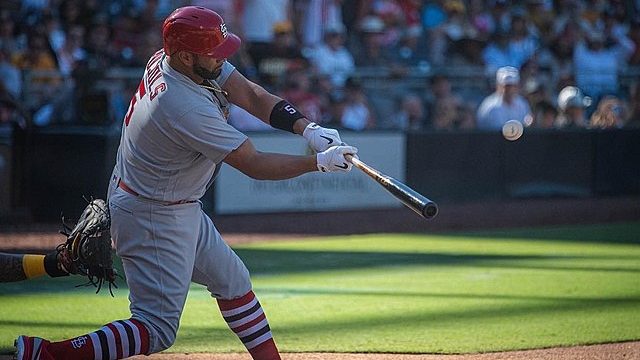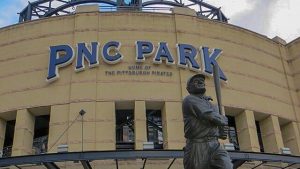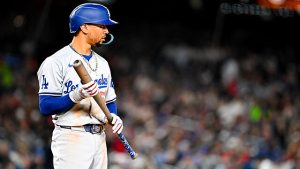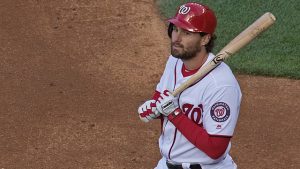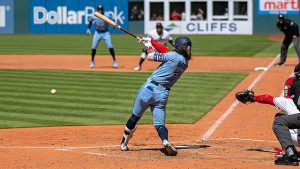Last Updated on January 26, 2024 by Matt Musico
If you’ve ever wondered which players are among the Cardinals single season HR leaders at each position, then you’re in the right place. Outside of pitcher and designated hitter, each player had to man their position for at least 100 games (or 75% of games played) for the season in question.
After you’re done checking this out, head over to our Cardinals all-time and single-season home run leaderboards.
Cardinals Single Season HR Leaders
Catcher: Ted Simmons, 26 Home Runs in 1979
Across his 13-year stint with the Cardinals, catcher Ted Simmons was a consistent force in the batter’s box. He slugged a total of 172 home runs with 929 RBI in 1,564 games played. This included five campaigns of 20-plus homers and 80-plus RBI. His 1979 performance was part of a four-year run where he slugged at least 20 homers in a single season.
Simmons had 18 home runs through the end of June for the Cardinals in ’79. The month of June was his most powerful, totaling eight dingers with 24 RBI. Over his final three months of the regular season, he combined to hit eight homers with 35 RBI. The backstop also enjoyed hitting at home as opposed to on the road. He slugged 17 homers with a 1.010 OPS in St. Louis, compared to nine homers and a .767 OPS as a visiting player.
Pitcher: Bob Caruthers, 8 Home Runs in 1887
Bob Caruthers‘ 1887 season is something we’ll never see from a pitcher, even if there was no Universal Designated Hitter rule in Major League Baseball. That’s because he played in a different era, of course. On the mound, Caruthers went 29-9 with a 3.30 ERA and 1.167 WHIP in 341 (!) innings pitched. Across 436 plate appearances as a hitter, he slashed .357/.463/.547 with eight homers, 23 doubles, 11 triples, and 73 RBI.
Now that’s what you call helping yourself.
First Base: Mark McGwire, 70 Home Runs in 1998
Mark McGwire‘s 70-homer campaign in 1998 is still the second-most powerful season in MLB history. While he lost out to Sammy Sosa in the NL MVP Award race, he still finished second while being selected to an All-Star Game and winning a Silver Slugger Award. McGwire also led the league in homers, walks (162), on-base percentage (.470), slugging percentage (.752), OPS (1.222), and OPS+ (216).
Big Mac did a good job of spreading his power production evenly throughout games. He slugged 19 dingers between innings one and three, 24 between innings four and six, and another 23 between innings seven and nine. McGwire tortured two teams more than any others in this department. It included seven homers with 11 RBI against both the Chicago Cubs (11 games) and Florida Marlins (nine games).
Second Base: Rogers Hornsby, 42 Home Runs in 1922
From 1915 to 1921, Rogers Hornsby was an elite big-league hitter. He sported a .337/.398/.499 triple slash in 3,577 games played. But across this 858-game sample, he hit just 57 home runs. Fast-forward to 1922, and the 25-year-old needed just 154 games to hit a career-high (and league-leading) 42 homers. He also was at the top of the league in RBI, as he collected 152.
It was the final three months of 1922 that helped Hornsby reach the heights that he did. From March/April through June, he had 17 home runs with 58 RBI. From July to the end of the regular season, he slugged 25 homers with 94 (!) RBI. This included two months of double-digit homers (10 in July and 10 in September/October), as well as two 30-plus RBI months (42 in July and 30 in September/October).
Shortstop: Paul DeJong, 30 Home Runs in 2019
If you had to guess which player in Cardinals history is the only primary shortstop to produce a 30-homer season, who would you pick? I hope you said Paul DeJong. As it currently stands, his 30 taters and 78 RBI during the 2019 season are single-season career-high marks. It also included his first All-Star Game selection.
Surprisingly, DeJong preferred being a visitor as opposed to playing in St. Louis. At Busch Stadium, he hit just 10 homers and posted a .699 OPS in 329 plate appearances. That’s a stark contrast from what he did on the road, which included 20 homers and a .824 OPS. He found a way to lift his 2019 power numbers after the All-Star break despite fewer opportunities. He hit 13 homers with 35 RBI in 376 first-half plate appearances. Over his final 288 plate appearances of the season, DeJong slugged 17 homers with 42 RBI.
Third Base: Nolan Arenado (2021) & Scott Rolen (2004), 34 Home Runs
We’ve got ourselves a good old-fashioned tie atop the Cardinals’ third baseman home run leaderboard. Albert Pujols‘ 37 dingers in 2001 are viewed by some as the most by a third baseman, but he spent just 54 of his 161 games played at the hot corner, so it doesn’t count in our book.
The 2021 season was Nolan Arenado‘s first in St. Louis. He celebrated the occasion by hitting 30-plus homers for the sixth time. He also drove in 105 runs, which was the sixth time he surpassed the century mark in RBI. His power and run production increased with each out recorded in 2021. Arenado had nine homers and 19 RBI when hitting with no outs, followed by 10 homers and 36 RBI with two outs, and 15 homers and 50 RBI with two outs.
The 2004 campaign was Scott Rolen‘s best single-season offensive performance of his Hall of Fame career. The third baseman’s 34 homers, 124 RBI, and 1.007 OPS are all career-high marks. He also added in winning a Gold Glove Award because why not, right? Rolen had modest numbers at home, including 10 homers, 51 RBI, and a .866 OPS. But on the road, those numbers jumped up to 24, 73, and 1.156, respectively.
Cardinals Single Season HR Leaders
Left Field: Albert Pujols, 43 Home Runs in 2003
We don’t think of Pujols as an outfielder, but he started 113 games in left field for the Cardinals in 2003. It didn’t hinder his offensive production. The Machine won a Silver Slugger Award and finished second in NL MVP Award voting while adding 124 RBI to those 43 homers. He also led the league in batting average (.359), doubles (51), total hits (212), runs scored (137), and total bases (357).
Pujols relished the opportunity of stepping up to the plate with St. Louis trailing in games. His 1.176 OPS in that situation was made possible thanks to a .405/.473/.703 triple slash, 10 homers, 26 doubles, and 34 RBI.
Center Field: Jim Edmonds, 42 Home Runs in 2000 and 2004
Jim Edmonds produced five seasons of 30-plus homers during his 17-year career. Outside of a 33-homer performance in 1995 for the California Angels, the rest came between his 40-homer performances of 2000 and 2004. Both of those seasons resulted in two top-five finishes in NL MVP Award voting, two Gold Glove Awards, one All-Star Game selection, and one Silver Slugger Award.
In 2000, Edmonds reached this season-long number with pure consistency. He hit eight homers three times (March/April, May, and July) and he hit six homers three times (June, August, and September/October). In 2004, he posted two months of double-digit homers (13 in July and 10 in August) and never hit more than six in any other month.
Right Field: Stan Musial, 39 Home Runs in 1948
The 1948 season was Stan Musial‘s third and final MVP campaign, and he led the league in several categories. This includes batting average (.376), on-base percentage (.450), slugging percentage (.702), OPS (1.152), OPS+ (200), total bases (429), RBI (131), triples (18), doubles (46), total hits (230), and runs scored (135). Although he never won another MVP after his age-27 performance, Musial finished second in voting four more times.
Musial’s monthly production in 1948 was truly astounding. Some counting stats jump out more than others, but his OPS was consistently elite from start to finish. Check it out:
- March/April: 2 homers, 12 RBI, 1.247 OPS (8 games)
- May: 8 homers, 22 RBI, 1.226 OPS (28 games)
- June: 7 homers, 17 RBI, 1.234 OPS (28 games)
- July: 7 homers, 28 RBI, 1.061 OPS (29 games)
- August: 10 homers, 30 RBI, 1.151 OPS (33 games)
- September/October: 5 homers, 22 RBI, 1.083 OPS (29 games)
Designated Hitter: Albert Pujols, 15 Home Runs in 2022
Pujols returned to St. Louis in 2022 for his farewell tour. The final campaign of his 22-year career was much better than many were expecting. The right-handed slugger slashed .270/.345/.550 with 24 home runs and 68 RBI. This helped him surpass the 700-homer plateau, and that was made possible thanks to a second-half surge.
Heading into the All-Star break, Pujols had six homers and a .373 slugging percentage through 173 plate appearances. Over the last 178 trips to the plate of his career, he slugged 18 homers and produced an eye-popping .715 slugging percentage. He spent 250 of his plate appearances as the Cardinals’ designated hitter, mashing those 15 taters with 43 RBI and a .830 OPS.
Want to see the Cardinals slug dingers in person? Grab tickets from our friends at Vivid Seats. And before you get to the stadium, make sure you’re decked out in the right gear. Get official Cardinals merch from the MLB Shop or a ‘Big Dinger Energy’ shirt from our apparel store.
